
Dino Martens
Oriente Olaf Vase, model 3122
Aureliano Toso
Italy, 1952-61
internally decorated polychrome patchwork glass with copper inclusions, pinwheel and filigrana
15 h x 6 dia in.
Literature: Dino Martens: Muranese Glass Designer, Heiremans, pg. 70 illustrates model
Private Collection of Gregg and Jennifer Shienbaum
About the work:
Art glass created by Dino Martens is some of the most recognizable Murano glass from 20th century Italian art. His innovative use of bright metallic colors using huge murrini (glass rods with colors or images in them) and fantastical shapes make Dino Martens one of the great creators of modern art.
Martens was born in Venice in 1894. He went on to study at the Accademia di Belle Art, where he developed his skills as a painter. He exhibited in Venice as a young man in the 1920’s and by the end of the decade was a designer for Salviati & Co, a leading glass maker. After fighting in the African War, he took up the position of artistic director at Aureliano Toso. They were a famous Venetian glass maker where Dino became a legend. There he experimented with creating astounding designs that pushed the boundaries of what was possible with glass.
A great example of one of these legendary designs is his Oriente series. A vase from this series encapsulates the energy and vibrancy of his work and life. He played with form and color, putting unusual colors close together and playing them off each other. All the while intriguing the eye with almost biological shapes.
This weeks WORK OF THE WEEK (WOW!), is the Olaf Vase model 3122, from the Oriente series.

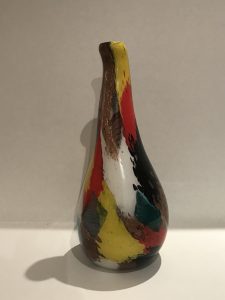
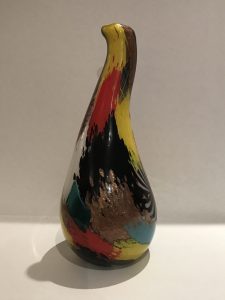
When he designed the series “Oriente”, Martens seems to have been inspired by bright African patterns and colors. He combined bold, asymmetrical shapes with adventurous patterns requiring the highest glass making skills: aventurine copper or gold inclusions, spiraling “Zanfirico” glass canes, and murrains.
The Oriente series, making its first appearance at the Biennial of 1952, form the culmination of numerous experiments diffusing the borders between a painting and a glass vase.
The first step of the the Oriente technique is the cold alignment on a flat surface of the ground glass, the colored square pieces, a number of short zanfirico canes, and in the majority of instances, a star shaped glass piece. The star is typically made of black and white canes.
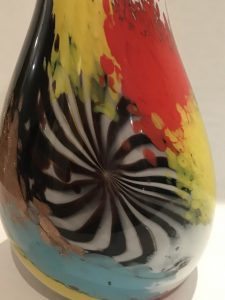
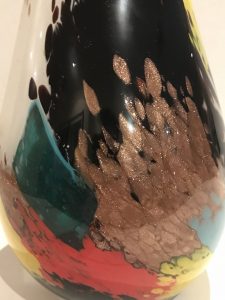
The resulting arrangement is then slightly heated, and picked up with a colorless glass bubble, incorporating the decoration in the glass wall. This technique and design was a tremendous commercial success, and brought Dino Martens’ reputation as a glass maker to the forefront of Italian glass making.
The Olaf Vase stands 15 inches tall, and has a large bulbous bottom of 6 inches in diameter. It is a very impressive work combining and fusing hot bright colors with specs of aventurine, and various canes competing against each other, creating a sense of a fast paced motion in a stationary vase. Its shape lends to this sense of motion.
The Oriente design is is one of Dino Martens’ most recognizable, and most important design, that has remained timeless over the years.

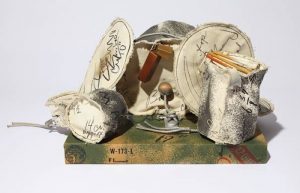
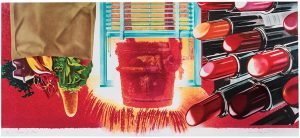

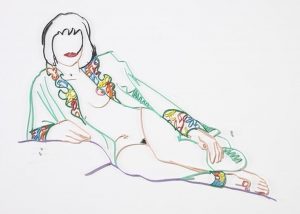 Tom Wesselmann
Tom Wesselmann

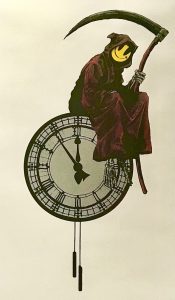
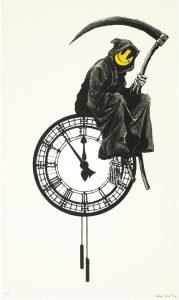
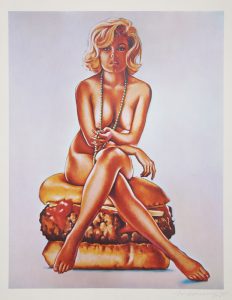 Mel Ramos
Mel Ramos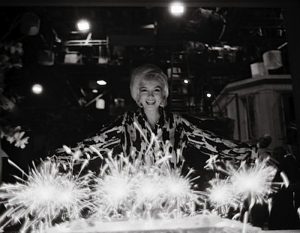
 Robert Rauschenberg
Robert Rauschenberg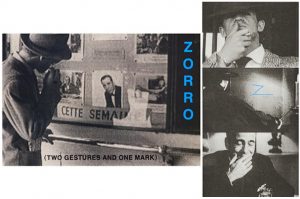 John Baldessari
John Baldessari